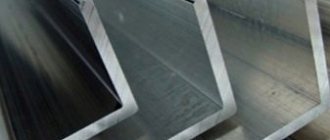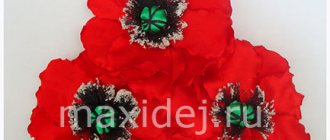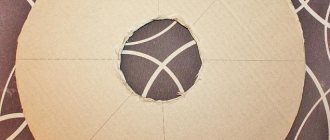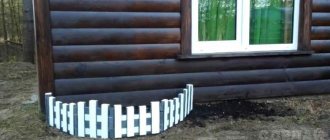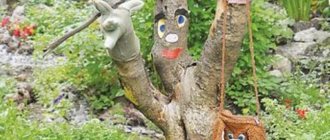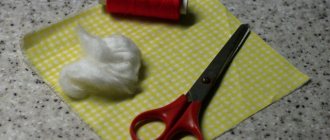Patchwork technique
What's the first thing that comes to mind when it comes to using scraps? Of course, patchwork, also known as patchwork.
This technique is truly the most popular way to dispose of fabric scraps around the world. Moreover, contrary to popular belief, the ability to sew on a machine is not at all necessary for patchwork - with the help of hand sewing you can also create a masterpiece. The only thing needed is patience.
Patchwork comes in different types, the main ones being:
- classic : creating patterns of squares and triangles according to certain patterns;
- Japanese : along with patchwork, there is appliqué and stitching;
- crazy (crazy patchwork) : one of the simplest techniques. It is suitable for beginning needlewomen because there are no strict rules (pieces of fabric can have the most incredible contours; nearby there are scraps of fabrics that are completely different in texture and properties; fabrics are complemented with ribbons, lace, buttons, etc. - in a word, complete freedom for creativity).
Not only patchwork quilts, familiar to many from childhood, are made using the patchwork technique. It is used for sewing bags, home textiles, clothing and even for creating furniture. Modern products made using this technique have long ceased to be associated with the “rustic” style. Now patchwork is fashionable and stylish.
From felt
Felt is a very popular material now, from which you can sew almost anything. In addition to all its advantages, for example, brightness, high density, it also holds its shape, which is especially important in some cases. For example, when sewing toys for puppet theaters, it is simply irreplaceable. In addition, cut edges made of this material do not fray or crumble, and therefore do not require additional processing.
Large soft products are unlikely to be made from it, since the rather dense hard felt will not be very convenient to stuff. It is more suitable for small animals or finger theater puppets, where the ability to keep its shape is important.
Master class on how to make a felt cow without a sewing machine:
How to sew a felt kitten with your own hands:
Kinusaiga technique (patchwork without a needle)
Another great way to put fabric scraps to good use is the Kinusaiga technique, which originated in Japan. Moreover, if patchwork requires at least minimal sewing skills, then in kinusaiga this is not required. This technique is called “patchwork without a needle.” Even a child can master it.
With the help of kinusaiga they create paintings, decorate boxes and boxes, make New Year's toys and Easter eggs. Furniture, lampshades and other interior items are decorated in this way.
To make a painting using the Kinusaiga technique you will need:
- polystyrene foam at least 1-2 cm thick (the Japanese use wooden boards as a base);
- sketch;
- pieces of fabric: it’s easiest to work with fairly thin, non-flowing fabrics that hold their shape well (the Japanese prefer to use silk);
- a nail file with a thin sharp edge, a ripper, an awl or other similar tool;
- stationery or breadboard knife;
- glue: some prefer glue sticks, others prefer PVA, experienced craftswomen work without glue at all.
Work begins with creating a sketch. If your drawing grades have always frustrated you and your parents, then find a picture you like on the Internet. For the first works, it is better to choose drawings without small details.
Using carbon paper, transfer the design onto the foam. Instead of foam plastic, you can use ceiling tiles, but working with them is somewhat more difficult, because... it's quite thin.
Using a breadboard or stationery knife, go over all the lines of the drawing (photo 1 in the collage). Your goal is to cut shallow grooves - 2-3 mm (if the foam is thick, then up to 5 mm is possible).
And now the most interesting part begins - the actual creation of the picture. However, in kinusaiga, fabrics, rather than paints, are used for painting. Cut out a piece of fabric of the desired color and size (it should be several millimeters larger than the actual contours of the picture) and attach it to the desired place in the picture. To make the fabric non-slip and easier to work with, spread the surface of the foam with a glue stick. Push the edges of the fabric into the grooves (Image 2).
Do this with each piece until you have “painted” the whole picture. Glue a sheet of cardboard onto the back of the painting and frame the work (photo 3).
Patchwork for beginners: different techniques and patterns
Sewing from fabric scraps is a type of decorative and applied art, where small pieces of fabric are used to assemble beautiful products that are useful in the household and decorate the interior.
This creativity originated in England and gradually became known throughout the world. In difficult times, when there was no abundance of materials, women sewed together scraps of old clothes to make new ones. The experience of patchwork sewing has been passed down from generation to generation, various techniques and patterns have appeared, as well as basic rules that are important for beginners and experienced craftsmen to follow.
Scroll:
- Correct selection of fabric . The material must be combined in color, pattern theme, as well as density and texture. Most often, needlewomen use chintz, denim and silk fabric.
- Accuracy . To make a sewn product look neat and beautiful, you need to follow the patterns and patterns exactly. Pieces of fabric are cut strictly along a ruler and stitched on a sewing machine, making equal indents for the stitching.
- Trial works . Experienced craftsmen recommend that beginners check the patterns of large products by sewing them in miniature. This will take time, but this method will help you check the accuracy of the template, as well as identify difficult areas and find solutions to problems. It is difficult to correct mistakes on a large finished work; there is a risk of completely ruining the appearance of the product.
- Steaming and ironing . All products undergo several stages of heat treatment. First, the fabric is ironed before making patterns, then the cut out flaps are ironed, and after the work is completed, the craft is steamed.
The cutting and sewing method differs depending on the technique used to make the product. The most popular quilt styles are described in more detail below.
Bargello
Finished projects using this technique look complicated, but in fact, this is one of the easiest ways to create a beautiful piece of scrap art. Here it is important to choose the right shades of materials, as well as learn to sew carefully, connecting the joints of fabrics as smoothly as possible. Learning to sew in the Bargello style begins with making blocks from strips of fabric.
These elements are the basis for the finished work. The fabric is cut into even strips, with an increase of 5 cm. The resulting strips are sewn together along the long edges using an ordinary machine stitch so that the seam remains on the wrong side. You need to start connecting the strips from the bottom up. Before stitching the material, the ribbons need to be connected with tailor's pins along the edges.
Craftsmen recommend changing the direction of each new seam in the opposite direction. This way, the risk of stretching or creasing one of the “accordion” tapes is reduced. After the ribbons are sewn, you need to iron the seams from the inside out so that they do not puff up. Then, from the resulting large block, 4 small ones are cut out in the form of isosceles triangles.
These parts need to be folded into a square, connecting the tops of the triangle in the center and stitched. The result will be a square fragment sewn using the strip-to-strip technique. From these parts you can already assemble a pillowcase, a cape for a chair or a bedspread. To obtain a product in the Bargello style, the technique needs to be improved.
How to do it:
- Fold the fabric sewn from fabric ribbons in half lengthwise and sew the edges.
- The resulting “bag” must be cut vertically into strips of equal width to obtain rings sewn from square scraps.
- Now these rings need to be disconnected, following the “step” pattern. To do this, each subsequent ring is cut 1 square higher than the previous one.
- The strips are sewn together so that the seam lines remain even and the stepped pattern is preserved.
The result was a block using the bargello technique. All that remains is to cut off the excess and iron the fabric, bending the seams to one side.
Patchwork
Another simple technique for creating an unusual pattern from different scraps. In classic patchwork, patterns of simple shapes are used: squares, triangles, hexagonal and rectangular shapes. Depending on the shape of the patterns, classic patchwork is divided into types.
The table describes the 5 most popular:
| Quick squares | Magic triangles | Chess | Watercolor | Stripe to stripe |
| The fabric is sewn in wide strips. The resulting fabric is cut crosswise into strips, and they are joined again in random order. | Patterns have the shape of isosceles, scalene or right triangles, from which more complex patterns are laid out. | The products are made from 2 types of fabric. Square parts are connected in a checkerboard pattern. The seams can be inside or outside, with embroidery or fringe. | The scraps are carefully selected by color, simultaneously creating a pattern in which dark shades smoothly transition into light ones, imitating a watercolor drawing. | This technique is the basis for the bargello style. Fabric ribbons are sewn together along the long edge. Blocks can consist of either straight lines or square blocks. |
Professionals advise creating your first works using the classical technique. Large parts of simple shapes are easier to sew and assemble interesting patterns. When patchwork-style products begin to turn out neat, you can move on to learning more complex techniques.
Pizza
Patchwork is a waste-free production. If small scraps of fabric of different colors and shapes remain after work, you can also create unusual colorful products from them. This technique is called "pizza" because the process of forming the pattern is reminiscent of laying out the ingredients of an Italian dish on the dough.
The basis is fabric of medium thickness. Small scraps are sorted by color and randomly placed on the workpiece. To prevent protruding corners and threads from spoiling the ornament, a piece of transparent or tinted tulle or organza is placed on top and stitched with a parallel or cross stitch. The result is a bright and original pattern.
To assemble a large product, you will need to sew several blocks. Small pieces of fabric are sewn onto a pre-cut lining. Upon completion, the edges are trimmed evenly, sometimes processed using an overlocker.
Crazy
This style of sewing, like pizza, allows you to use leftover fabric for creativity. Patterns are not needed here, the main thing is imagination and beautiful design. This technique involves a chaotic combination of fabric of different textures, colors and patterns of various themes. In addition to irregular shapes, seams in “crazy” sewing are decorated with embroidery or fringe.
You can embroider small patterns over the flaps with braid or satin ribbon. Bead embroidery and interesting button compositions are welcome. The edges of the finished blocks are trimmed and aligned after sewing on the flaps. To prevent the fabric from puffing up, the sections can be overlocked with an overlocker.
Boro
The “boro” technique is considered unique because it is based not on machine stitching, but on hand stitches. The fabric scraps are cut into rectangles and squares. They are arranged in random order. The connections should not be straight; the fabrics are laid out so that the edges overlap each other. Some flaps can be slightly unraveled at the edges.
When the pattern is completely assembled, all elements are fastened with pins. So that the flaps do not move apart. Machine stitches are laid along the fabric at a distance of 5-10 cm from each other. Then they take strong threads, preferably their color should be contrasting with the overall plan, and stitch the fabric manually, using “forward needle” stitches. In some places you can embroider crosses.
Lyapochika
Sewing from scraps of fabric in the “lyapochika” style gives the products an unusual fleecy appearance. The strips of fabric are placed unfolded on the backing and machine-stitched in the middle. Both ends of the tape remain free. The material is sewn tightly together in a row. Sewing starts from the bottom up. The larger the shreds, the more voluminous the product.
Using this technique, you can create 2 types of patterns: volumetric and color. It is believed that arranging fabric of different colors in the “frog” style is more difficult than in others. Most often, special markings are used for work. Three-dimensional patterns are obtained from long rags woven together.
American quilting
This type of patchwork is considered a separate direction, the distinctive feature of which is volume and three layers. A thin layer of padding polyester is laid between the backing and the flaps, and then the fabric is quilted. Children's blankets, bedspreads and rugs are sewn in this style.
Fabrics for the front side are plain and similar in texture. Patterns with a plot are encouraged in quilting. A design is laid out from the flaps and given volume by machine stitching along all the lines.
Rugs made from pieces of fabric
Fabric scraps can be used to create soft rugs for the bathroom, hallway, bedroom, etc. You don’t need to have any skills to do this – anyone can do this kind of work. Rugs can be made plain or colored, round, rectangular or square, the ribbons in them can be placed randomly or create a specific pattern - it all depends on the fabrics you have and your desire.
To create a rug from scraps you will need:
- strips of fabric;
- plastic mesh (the most affordable option is construction mesh) with square cells, the most convenient cell size is 10x10 mm.
Cut the fabric into strips 10-15 cm long. The width of the strip depends on the density of the fabric: if you have thin knitwear, then make it 5 cm wide, and if you decide to use leftovers from a thick terry robe, then 2 cm is enough.
To create rugs, it is better to use non-friable, slightly stretchable fabrics; the ideal option is old knitted T-shirts.
After the strips are cut, get to work:
- Cut a piece of the desired length and width from the mesh: add 3-5 cm to the desired size of the rug on all four sides.
- Tuck the edges of the mesh (3-5 cm) inward along the perimeter. They need to be fixed so that the mesh does not fray over time. To do this, tightly cover the rug around the edges with a long strip of fabric (photo 1 in the collage).
- Proceed to the main part of the work. Your goal is to secure the strips in the cells (you need to move from the edges of the mat to the center). This can be done in two ways: either tie regular knots (photo 2), or make a fastening with a lock, which is used in macrame (photo 3).
If you don't have a mesh, you can use matting or burlap instead (photo 4). However, in this case, it is better to take thin fabric for the stripes and pull it through the holes not with your hands, but with a crochet hook.
Dog toys
You can, of course, buy a dog toy at a pet store, but why spend money on it if you can make it from leftover fabrics. To make a toy for a pet, it is better to use strips of fleece or knitwear (for example, from old T-shirts).
- Take 3 long strips of fabric.
- Make cross-shaped cuts in the tennis ball on two opposite sides. Pass fabric strips through them (photo on the left in the collage) and tie knots on both sides. If you still have a ball from your dog's previous toy, you can use it (photo on the right).
- Weave braids about 20 cm long on each side. Then connect them together and braid one braid from all the strips at once.
- Finally, tie the fabric tightly and trim off the excess.
From the remnants of the fabric, you can also weave ropes for the dog and tie them at the ends with knots (central photo).
Bags for storing items
From fabric scraps you can make bags for storing all kinds of items. These bags will come in handy anywhere:
- in the nursery - for toys;
- in the kitchen - for cereals and storing bags (you can, of course, store bags in a bag, but they look more interesting in bright bags);
- in the workshop - for yarn, creative tools, etc.;
- in the bedroom - for aromatic herbs;
- in the hallway - for combs, gloves, keys;
- in the bathroom - for creams, shampoos, etc.
You can also sew small gift wrappings from leftover fabrics.
Baskets made of cord and strips of fabric
If you don’t know how or don’t want to sew, it doesn’t matter! To create baskets from fabric scraps, you can do without sewing. To work you will need:
- thick cotton cord;
- narrow strips of fabric (3.5-4 cm wide);
- glue gun
Find a shape for the future basket. It could be a salad bowl, a round box, a bucket - anything. After that, get to work:
- Wrap the cord along its entire length with a strip of fabric (increase its length by simply placing a new piece under the end of the old one). To ensure that the fabric adheres well to the cord, glue it with hot glue every 5 cm.
- Start shaping the cord into a basket shape. First make the bottom, and then gradually move on to the walls. As you work, constantly use a glue gun, gluing coil to coil in several places.
- Finally, secure the edge of the cord with hot glue to prevent it from fraying over time.
If you wish, you can make a lid for your basket in the same way.
Teddy bears
These are all kids' favorites! Everyone knows, everyone wants! We are sewing a surprise for the kids.
It's so nice to sew this soft toy with your own hands. Below you will find toy patterns.
Traditionally, plush fabric or faux fur is used for these cubs.
- We already know how to transfer patterns onto fabric, go ahead!
- If you take fur into work, it is advisable to cut it at the allowances.
- We connect the parts of the upper legs and sew in the palms.
- We sew together the parts of the legs, leaving the sole open, where we sew in the heels and soles.
- By analogy, we make a tail and assemble the head. When assembling the body, leave the hole for the neck open.
- We stuff the Teddy in the lower sitting part more tightly for stability. The head is not too much, so as not to overweight.
- Let's mark the fingers with stitches made from floss or woolen thread. Embroider a mouth and nose on the face. The eyes are traditionally large with crosses.
- There is one secret to keeping your head stable. Take one empty wooden spool of thread and wrap a piece of your fabric around the middle. Insert into the hole for the neck and attach to it in circles using a hand stitch, first the body and then the head.
If desired, tie a ribbon around your neck and sew a small vest or panties.
Kitchenware
The kitchen is the place where almost anything can be done using fabric scraps, especially if it is a country kitchen. We list the main kitchen items made from scraps:
- potholders,
- tablecloths,
- covers for stools and chairs,
- hot coasters,
- serving napkins,
- aprons,
- organizers for cutlery and kitchen utensils.
And this list can be continued. If you decide to dispose of excess pieces of fabric, then the first thing we advise you to do is go to the kitchen. Your imagination will have room to run wild there.
Panels and paintings
Decorating your apartment with unnecessary fabric scraps is another way to put them to good use. For example, make original paintings and panels. The simplest option is to cover corrugated cardboard, foam plastic or other dense base with a piece of fabric of a suitable tone. Several of these panels, arranged in a group, will become the highlight of your interior.
Panels can be made not only from large cuts, but also from small pieces of fabric. It's very easy to make. Glue your favorite scraps in random order onto a thick fabric stretched over a base (lower right photo in the collage) - and the interior decoration is ready. Such a panel would look appropriate in a children's room.
If you are an artist at heart, then try creating paintings from fabric scraps. Textile products of this type are most often created using the appliqué technique: pieces of fabric are sewn to the background by hand or using a sewing machine.
However, a picture from scraps can be made even without the ability to sew (central photo in the upper half of the collage). You will need a large number of scraps of different sizes and colors, PVA glue, a brush and a lot of patience.
The process of creating a picture from pieces of fabric:
Draw the outlines of your future painting onto the base fabric. If you have large fabric scraps, cut them into smaller pieces. Apply glue to part of the base and place a piece of fabric over this area. Smooth everything down with a dry brush. Glue all the pieces in the same way. If the painting is multi-layered, then after applying each layer, give it time to dry. Frame your artwork and hang it where you can see it.
Step-by-step examples for beginners
Chess
For the craft, you will need two pieces of fabric of contrasting colors, one of them should be either plain or with a subtle pattern.
- Cut the fabric into strips of equal width.
- Sew stripes, alternating colors.
- Cut the fabric crosswise into new strips of the same width.
- Turn each odd-numbered strip upside down - you will have a ready-made chessboard.
- Sew the strips to each other in the order you laid them.
- Finish the edges of the product with satin ribbon or braid.
log cabin
- Prepare pieces of fabric - a square for the center and a strip. There is no need to calculate the length of the parts in advance; they will be cut off during operation.
- Apply the first ribbon to the square with the right sides and sew on the machine.
- Cut the strip along the edge of the square, fold it over and iron it.
- Attach the next strip to the long side of the resulting fragment, facing each other in the same way, stitch.
- Trim the part of the strip that extends beyond the edge.
- Bend over, iron and continue to successively sew new ribbons to the growing product. It is important to follow the chosen direction and start a new turn on the same side from which you sewed the first part.
Any final words? Try different styles and techniques. To test new color solutions, draw preliminary diagrams on your computer or tablet. Experimentation will speed up your learning and help you create home decor, clothing and accessories in your own personal way.
Protective masks
It goes without saying that in this difficult pandemic year we could not ignore the topic of protective masks.
Just a year ago we believed that a mask was a product of white or bluish (greenish) colors. Now it turns out that masks can come in all colors and shades. They are sewn from fabric with polka dots, checkered, striped, floral, plain, colored, etc. To make a mask, you don’t need large cuts - rather modest pieces are enough, so leftover fabrics will come in handy for this work.
Masks sewn using the patchwork technique look very original. To make them, first a blank is made from scraps, and then a mask is cut out and sewn from the finished patchwork fabric.
Another interesting option for masks is masks with appliqué. Children wear them with great pleasure. Even small pieces of fabric are useful for making appliqués. Fabric patches can be combined with embroidery, sequins, beads, etc.
Story
Creating things from small scraps of fabric has existed for a long time among many peoples of the world. This became possible due to the fact that when working with fabric, pieces and scraps of materials remain. In Egypt, an ornament was created from pieces of gazelle skin. This was around 980 BC. e. And in 1920, a patchwork quilt was found in the cave.
patchwork quilt
Sewing from rags appeared due to a shortage of material. And in England in 1712 they began to preserve domestic production of patchwork sewing. The blanket came to North America with settlers in 1620. Also, due to the shortage, the patchwork technique has become popular. At the 1876 World's Fair in Philadelphia, a work with a pattern of silk fabric was exhibited, and it was complemented by a sign. And immediately gained enormous popularity. This has always been quite common in Rus'. In the 17th century, patchwork rugs appeared. This kind of sewing became popular in the 19th century, when foreign chintz appeared. Russian sewing is characterized by assembly by hand, without any devices.
You might be interested in: Creating a pattern and sewing wallets with your own hands
Patchwork rug
